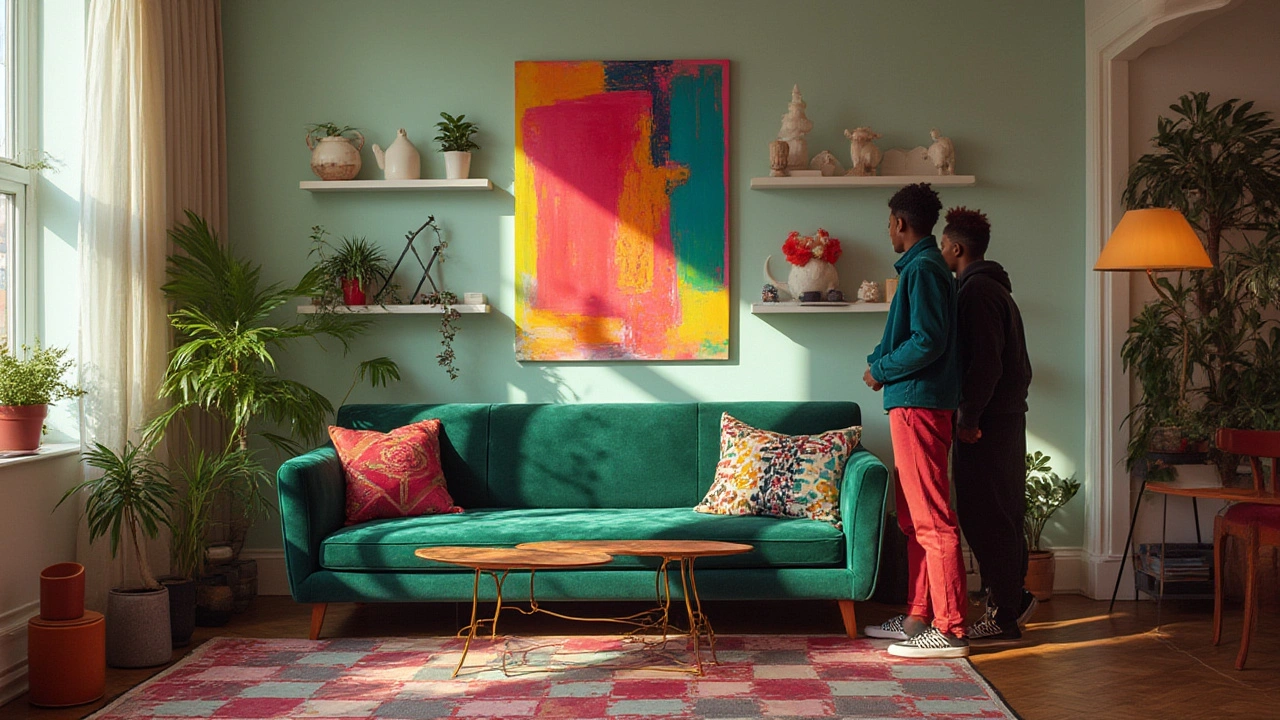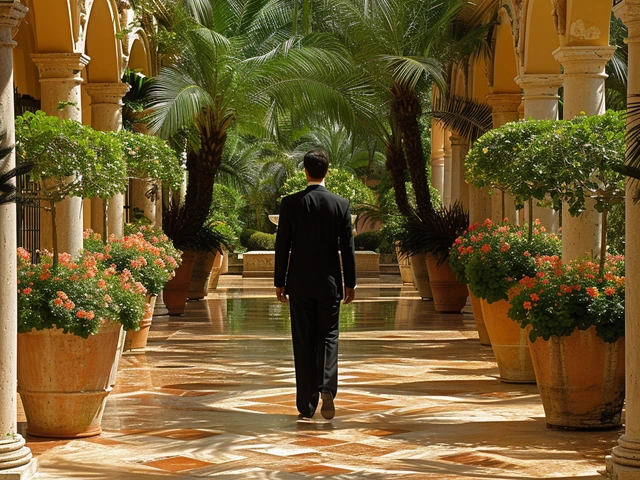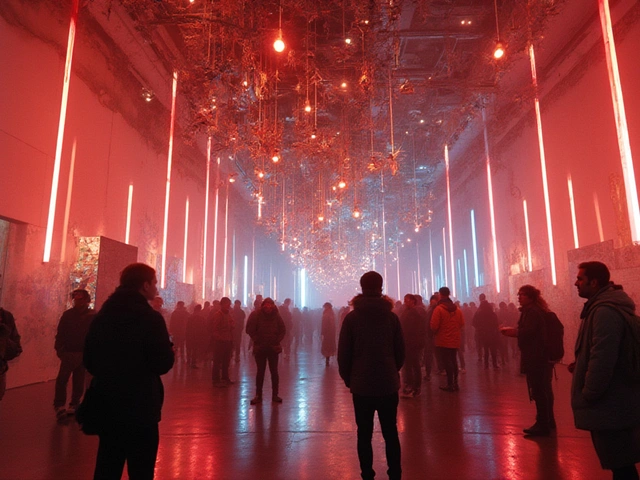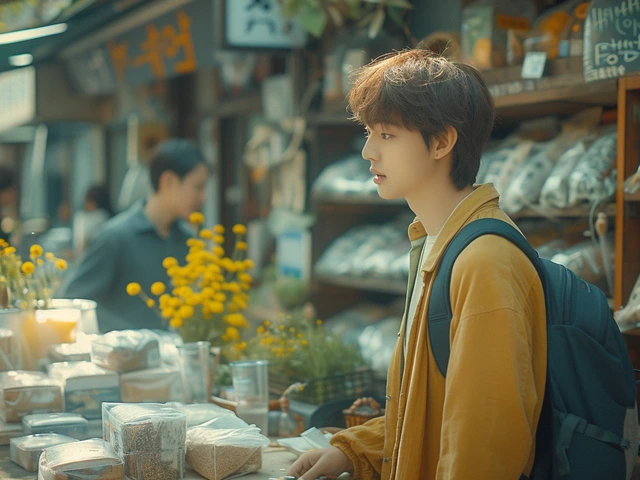If you think you’ve seen it all in home décor, think again. Avant-garde nearly always ruffles feathers—it’s not about playing safe or sticking with the crowd. It’s the wild child of design, dodging routines and sending ordinary tastes out the door. Ever walked into a room and felt your jaw drop at the weird mix of sculpture, shocking color, and unexpected shapes? That’s what we’re chasing here. Even in the sun-baked suburbs of Brisbane or a cozy flat in Sydney, homes are breaking free from what’s expected. By 2025, more people want their homes to be conversations, not just canvases. According to a 2024 trend report from Home Beautiful Australia, bold personal expression and experimental shapes surged by 27% among homeowners renovating last year. That’s not just a blip on the radar—that’s culture shifting. Ready to make your house a headline? Avant-garde’s where you start.
Understanding Avant-Garde Home Décor: What It Really Means
First off, avant-garde doesn’t mean slapping together every strange item you own. The French call it “advance guard,” meaning out front, leading the charge. In art and design circles, it means snubbing the usual rules and taking real risks. This could mean mixing materials—like glass with concrete, or felt with metal—or setting up a light fixture so wild it borders on alien. The roots stretch back to early 1900s Europe, with groups like the Dadaists turning dull interiors into whimsical battlegrounds of creativity. You might have seen mirrors that melt, chairs that look like crumpled paper, or clocks that spiral instead of ticking straight. Avant-garde is all about challenge, making people stop and really look.
But don’t confuse avant-garde with chaos. It’s not about turning your home into a jumble sale. Every piece should have a place and a purpose, even if it makes visitors scratch their heads at first. Think about artists like Yayoi Kusama—her obsession with polka dots makes entire rooms hum with energy, but nothing is random. In 2022, the National Gallery of Victoria hosted an interactive survey about what defines avant-garde in design, and most visitors landed on three traits: surprise, intent, and emotion. If your décor doesn’t start a conversation or challenge expectations, it’s not avant-garde.
There are a few classic vintage moves—bizarre shapes, oversized art, and a total disregard for what’s ‘supposed to go together.’ But there’s also a growing trend towards tech-infused decor, with things like kinetic sculptures and projection-mapped walls. For parents (speaking from experience), even kids get it. My youngest, Reuben, once said our new lamp looked like ‘a glowing octopus,’ and honestly, that’s a win in avant-garde’s book. The key lies in intention: curating pieces, not just collecting. It’s the designer’s eye that turns odd into genius.
Expect a clash of eras and cultures, too. It’s not odd now to see a vintage 1940s armchair right next to an ultra-modern acrylic side table. Or a wall painted with abstract graffiti above a Victorian skirting board. You set the rules, but you need to own it. There’s no hiding behind Scandinavian minimalism or farmhouse trends; avant-garde is for people willing to make a mark.
Color, Texture, and Shape: The Building Blocks of Bold Expression
Color sets the mood—sometimes a thunderstorm, other times pure electric fizz. If you want to go avant-garde, ditch beige. Instead, jump straight into bold teal, deep orange, poppy red, or whatever clashes most with ‘subtle.’ A 2024 Interiordesign.net survey found that homes experimenting with high-contrast, unconventional color combos have a 33% higher chance of being described as inspiring by guests. That’s real social proof, not just some number made up in a magazine’s boardroom.
Textures matter just as much. Why stop at velvet when you can tack on fur, chainmail, or reflective tiles? I saw a living room last year with a huge wall of artificial turf, right next to a floor lamp made of rusted scrap metal—sounds mad, but it worked. The magic happens when the touch draws you in. You don’t just see the design; you want to run your hands across it. Imagine a table with a top of cracked glass—dangerous, but captivating, and fully functional.
Shape is where stuff gets properly wild. Furniture morphs into conversation pieces—think shapeless couches inspired by clouds, or bookshelves that curl and snake like ivy. If it looks a bit off-balance or unfinished, that’s often the point. For example, Philippe Starck’s “Ghost” chair was a smash hit because it looked nearly invisible, pushing people to rethink the very idea of what a chair could be.
Pattern is another playground. Oversize geometric murals, wavy carpets, or curtains splashed with paint-drip prints toss the eye around the room in unpredictable ways. You don’t need to cover every wall—sometimes, one screaming, bold statement is enough to set the mood. Finn, my eldest, loves our massive spiral painting that swirls almost hypnotically in the entryway; he says it ‘makes time go weird.’ That’s the goal: art that disrupts the routine.
Don’t forget lighting. Swapping out regular bulbs for colored LEDs, or hanging a light fixture that seems to defy physics, lifts the whole design. Light and shadow play together, throwing patterns on the wall or bouncing colors across rooms. You get layers, not just illumination. Pair this with materials that reflect or absorb unpredictably—mirrored coffee tables, matte ceramic sculptures, rippling glass doors—to keep the energy shifting throughout the day.
Here’s a quick table with real examples seen in homes across Brisbane and Sydney, 2022–2024:
| Element | Example | Effect |
|---|---|---|
| Color | Electric blue walls with neon accents | Uplifting, energetic |
| Texture | Crushed velvet sofas, polished resin floors | Tactile, luxurious |
| Shape | Blob-shaped lamps, jagged glass tables | Intriguing, off-beat |
| Lighting | Programmable LEDs, dynamic pendant lights | Mood-shifting, artistic |
| Pattern | Graffiti-mural staircases | Provocative, bold |
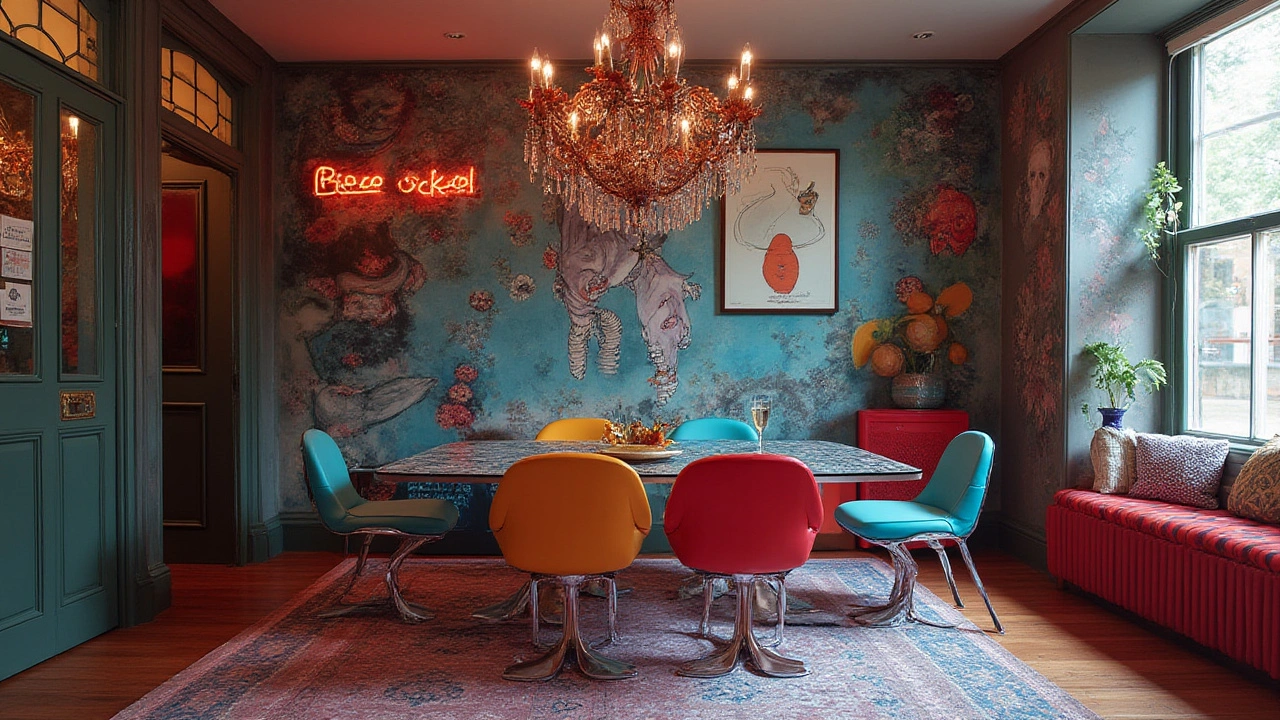
Curating Objects and Art: Sourcing, Selecting, and Placing
You can’t fake an avant-garde look by rolling into a big-box store and buying a set. True avant-garde decor is hunted down piece by piece. A lot of these gems come from local artisans, online design markets, or even from recycling centres. It takes some courage—and time—to hunt down a lamp that looks like a wriggling sea creature, or a coffee table carved out of one solid, rough sandstone boulder. If your wallet feels light after a browse on Etsy, you’re not alone. But the stories behind each oddball item are half the fun.
Placement is where the genius sneaks in. Don’t cram everything together. Let that surrealist mirror have an entire wall to itself. Spread out your collection—putting a jagged sculpture against a minimalist backdrop, for example, only makes the shapes pop more. People often worry about ‘breaking rules’ in layout, but no one walks into a Pollock exhibit and wonders where the armchairs should go.
Artwork drives home the point even further. If you want real shock value, bypass department store prints and seek out original or limited-run pieces. Graffiti-style panels, sculpture made from discarded iron, or even digital art frames cycling through mind-bending animations work better than a row of bland watercolours. Remember: avant-garde art has a job to do. If it doesn’t startle or challenge, try again. And never apologize for taste. When a neighbour mutters about your ‘weird ceramic bust,’ just ask what they’re hiding in their own living room!
One huge tip: bring in objects with personal history. Maybe that odd-shaped clay piece your kid made back in year three. Or a patchwork throw stitched from your grandfather’s old shirts. Avant-garde loves sentiment, especially when it comes carved out of left-field places. It’s not about showing off, but showing up—injecting life into the space. In fact, the annual Brisbane Arts Market reported a 19% spike in requests for quirky, upcycled home furnishings from 2023 to 2024.
There’s also an eco twist here. Reusing, recycling, and upcycling objects aligns with avant-garde principles—the more surprising the material or origin, the better. Think chairs made from driftwood collected after floods, or lamps that started life as industrial plumbing. Compost, scrap, or even broken electronics find new form and function. If you live with kids, don’t hesitate to get them involved. Finn and Reuben both love the scavenger hunt feel of finding the next ‘weird’ project for the house. It’s environmentally conscious, plus it sparks creativity for the whole family.
Pay care to unity in chaos. The trick isn’t avoiding clashing elements—it’s choosing a thread that connects them. Maybe that’s a recurring color, or a shape motif like circles or triangles. Or maybe it’s a theme—nature in revolt, or the collision of digital and organic. No matter what you pick, carry it into different corners and let it echo. People should feel a rhythm, even if the notes don’t match.
Living with Avant-Garde: Daily Life in a Daring Space
Inviting avant-garde into your home isn’t always as easy as loving it in magazines. Day-to-day, a living room with off-kilter seating or glaring fuchsia walls can be a shock to the system. But the interesting thing is how quickly it grows on you. According to a recent Houzz Australia poll, families who tried bold redesigns reported being twice as likely to describe their space as “energizing” or “liberating” eight months after the renovation. There’s an adjustment period, but then it becomes your normal, and suddenly, bland interiors feel like a missed opportunity.
Living with avant-garde gets you thinking more deeply about your environment. Every morning, walking past that sculptural shoe rack or seeing those floating shelves held up by nearly invisible wires, you pause and see the ordinary differently. It shakes families out of autopilot. For the kids, the home becomes a giant playground for the imagination. For grownups, it boosts creativity and sometimes, unexpectedly, creates points of ritual—like discussing the newest oddball vase at the dinner table.
Maintenance and cleaning do demand a second’s thought. Not every wild-shaped piece is practical. Clear, open floors prevent tripping on odd protrusions or stumbling into low-slung tables. Sharp edges or delicate materials need strategic placement, especially if you have young kids or pets. I’ve found Lego bricks hurt less than the twisted feet of our custom metal end table, just as a heads-up. Rotating decor pieces every few months keeps things fresh and keeps wear and tear at bay. And don’t be afraid to swap art between rooms for a fresh jolt of surprise every so often.
Sometimes, guests won’t get it—and that’s totally fine. Homes full of monotony are safe, but a home with a unique story is unforgettable. I’ve had neighbours ask if we’re “done renovating” just because our dining area looks like a set from a futuristic play. But the best part about living avant-garde? You end up more comfortable, not less, with your taste—and you worry less about what’s trending. If it feels a bit offbeat and brave, it’s working. The goal isn’t to impress, but to provoke, engage, and spark joy.
Here’s a quick list of tips if you’re thinking about making your home bold, unusual, and your own kind of different:
- Start with one statement piece—a bright rug, oversized artwork, or an avant-garde light fixture.
- Mix texture and color—but keep one repeating motif for cohesion.
- Source local, upcycled, or handmade items for character and stories.
- Don’t crowd the space; let bold pieces breathe.
- Involve the family in sourcing or even making unusual art and furniture.
- Ignore the trends—avant-garde is about pushing boundaries, not following them.
- If you change your mind later, that’s the avant-garde spirit—keep evolving.
Ready to ditch plain and play it brave? Treat your home as an evolving canvas, and remember, only you set the limits. There’s no waiting for permission. Avant-garde home decor is there for the daring—so why not have fun and make your own rules?

